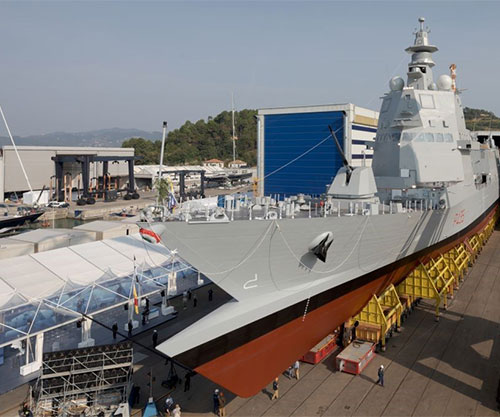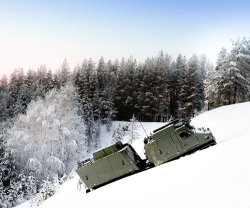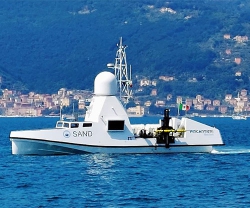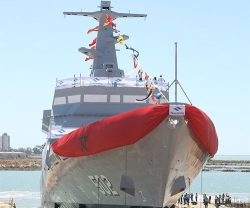On October 6th, the technical launch of the sixth Multipurpose Offshore Patrol ship (PPA) “Ruggiero di Lauria” took place at Fincantieri’s shipyard in Muggiano, Italy.
The ceremony was attended, among others, by the Admiral Enrico Credendino, Chief of the Italian Navy, and Gianmarco Medusei, President of the Regional Council of Liguria, welcomed for Fincantieri by Gen. Claudio Graziano, Chairman, and Dario Deste, General Manager of the Naval Vessels Division.
This vessel is part of the renewal plan of the operational lines of the Italian Navy vessels, approved by the Government and Parliament and started in May 2015 (“Naval Act”) under the aegis of OCCAR (Organisation Conjointe de Cooperation sur l’Armement, the international organization for cooperation on arms).
Vessel’s characteristics: PPA – Multipurpose Offshore Patrol Ship
The multipurpose offshore patrol vessel is a highly flexible ship with the capacity to serve multiple functions, ranging from patrol with sea rescue capacity to Civil Protection operations and, in its most highly equipped version, first line fighting vessel. There will be indeed different configurations of combat system: starting from a “soft” version for the patrol task, integrated for self-defence ability, to a “full” one, equipped for a complete defence ability.
The vessel is also capable of operating high-speed vessels such as RHIB (Rigid Hull Inflatable Boat) up to 11 meters long through lateral cranes or a hauling ramp located at the far stern.
- 143 meters long overall
- Speed more than 31 knots according to vessel configuration and operational conditions
- 171 persons of the crew
- Equipped with a combined diesel, a gas turbine plant (CODAG) and an electric propulsion system
- Capacity to supply drinking water to land
The Multipurpose Offshore Patrol ships are built at the Integrated Shipyard of Riva Trigoso and Muggiano, with deliveries expected until 2026.
Admiral Ruggiero Di Lauria: Grand Admiral of the Kingdom of Aragon and Sicily, he was appointed by the King of Aragon, Peter III, Head of the fleet (1282), from the outset he showed great seafaring skills and leadership that would lead him to win any battle at sea, even in conditions of obvious disadvantage; he defeated the Angevins (1283) at Malta and, the following year, near Naples, taking the regent Charles himself (the future King Charles II) prisoner. He rushed to the defense of Aragon (1285), threatened by Philip III of France, and defeated the opposing fleet at Las Formiguas near the Gulf of Rosas in Catalonia (Costa Brava). He again defeated the Angevins near Augusta and near Castellammare di Stabia (1287).
In 1291, he made a raid against the Greek Empire. Later, when James of Aragon agreed with Boniface VIII and Charles II on the question of Sicily, he fought against the rebellious Sicilians, defeating them at Capo d’Orlando (1299) and Ponza (1301).
After the Peace of Caltabellotta (1302), at the conclusion of the 20-year war of the Sicilian Vespers between the Angevins and Aragonese, he retired to Catalonia. He will go down in history as the admiral with excellent military skills and nautical knowledge, as well as uncommon seamanship and tactical skills.
Fincantieri is one of the world’s largest shipbuilding groups, the only one active in all high-tech marine industry sectors. It is leader in the construction and transformation of cruise, naval and oil & gas and wind offshore vessels, as well as in the production of systems and component equipment, after-sales services and marine interiors solutions. Thanks to the expertise developed in the management of complex projects, the Group boasts first-class references in infrastructures, and is a reference player in digital technologies and cybersecurity, electronics and advanced systems.
With over 230 years of history and more than 7,000 ships built, Fincantieri maintains its know-how, expertise and management centers in Italy, here employing 10,000 workers and creating around 90,000 jobs, which double worldwide thanks to a production network of 18 shipyards operating in four continents and with almost 21,000 employees.






















